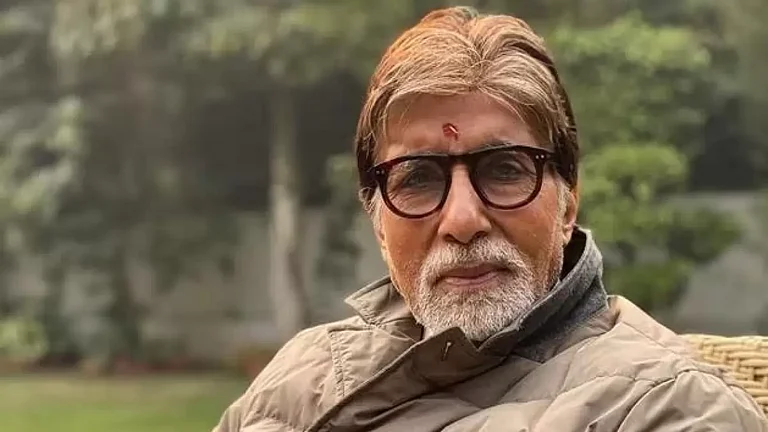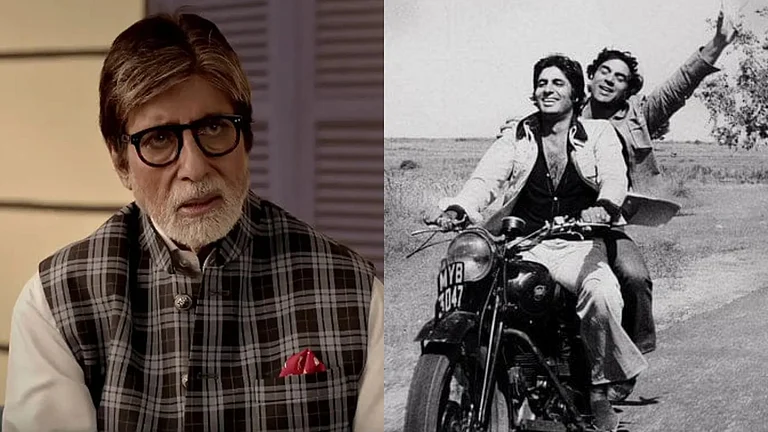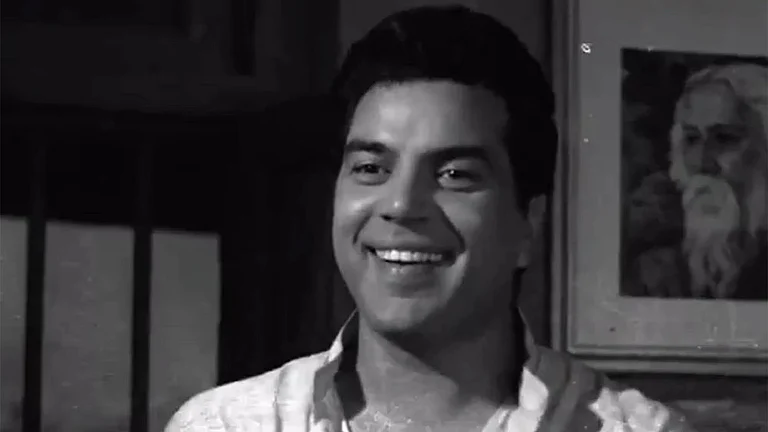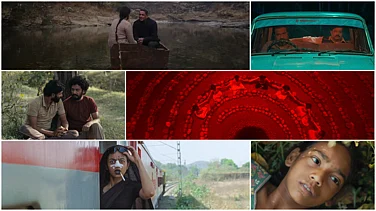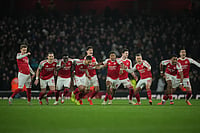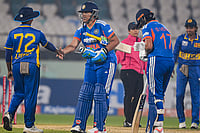Frank Williams is confiding in his friend Veeru about how he was mistaken for someone else by a family in a bungalow. He didn’t protest. Instead, he went along because of how familiar the bungalow felt. This is an oddly acted scene from Hum Kaun Hai? (2004), painfully flitting between dialogues in Hindi and English. Starring Amitabh Bachchan as Frank and Dharmendra as the friend (named after his character in Sholay, probably as an in-joke), they’re both far from their element. The scene (or the film) would feature nowhere near either of their showreels, but such is the beauty of Cedric Dupire’s The Real Superstar — an irreverent, experimental archive of Bachchan’s life, which not only showcases this scene, but uses it for a very specific effect within its narrative. I was amused, startled and impressed by Dupire’s pick.
Recently showcased at the MAMI Mumbai film festival 2024, a lot of cinephiles wandered into a late-evening screening of the film, unsure about what to expect. Most showed up probably because of the instantly recognisable face on the poster: Bachchan in his costume from Ajooba (1990). The veteran actor’s face might adorn practically every minute of the film, but this is Dupire’s film through and through. He uses scenes from Bachchan’s films to communicate why he was such a darling of audiences, while also closely examining his God-like status in India.
Dupire was in Rajasthan in 2002, where he was making a documentary on the folk musicians, when he was introduced to Hindi cinema. He remembers seeing Bachchan’s face plastered on most places his eyes went to. Only a few months ago, Kabhi Khushi Kabhie Gham (2001) had released. “At first, I was interested in fans, people – I couldn’t understand this devotion to an actor. I found out that people know dance steps and dialogues by heart,” says Dupire over a video call, “... just like how people in France know their chanson by heart.” Dupire started off with an idea around Bachchan’s lookalikes. He stuck with it for some time, which eventually didn’t pan out.
The 45-year-old filmmaker realised he was fascinated by how his audience were seeing Bachchan – almost like popular cinema could give them the answers. And the person delivering the answer would become God. “And then the core idea of the film became about how he’s a character in my film: where he’s the actor that he is, but he’s also what people see him as.”
The 69-minute documentary touches upon the macro milestones in Bachchan’s life story. For his birth, Dupire uses the staple Bollywood scene where a doctor announces in typical fashion: “Mubarak ho, beta hua hai!” His adolescence, his youth, his breakout moment as a star, his struggle with fame, his near-fatal injury on the sets of Coolie, his unsuccessful tryst with politics, business, and his resurgence as one of the most iconic actors to have ever graced our screens. Dupire’s film is mostly exceptional, sometimes contrived, in its use of footage from existing Bachchan performances. Take for example: the film opens with Amitabh Bachchan gingerly walking towards the camera sporting his red jacket in Majboor (1974). As he closes in, the light bounces off his perfect face. A star is born.
As an outsider and someone who wasn’t bred with the Bachchan kool-aid in his youth, Dupire’s film has some startling observations on the star. “One thing that fascinated me is his search for reality, after being the protagonist in a make-believe world for so long. What was happening in the supposed real life, permeated into his work, and bounced off again into the real world… Wow! What could be the life of a character, who was leading such a messy life!”

The documentary often makes a montage of his on-screen actions, which were clinically the same. Bachchan’s panther-like stance when he was sprinting towards a bad guy, or the way he used the revolver in his left hand and gritted his teeth, or his internal demolition when he would be around his ailing mother. As much as the repetition might please the ‘fans’ by highlighting his signature shots as a star, Dupire’s film also seems amused by the sheer monotony of it. The filmmaker sees Bachchan’s popularity as a labyrinth the star seems lost in. “I think I got the main crux of my narrative through the double-role films, where he’s facing himself. Who is he? Which is the real him? I think his crisis of a singular identity really stuck with me.”
Dupire was conscious about not making a film that looked like a ‘best-of’ showreel. There’s deliberately very little of Deewar (1975), Sholay (1975), practically nothing from Shahenshah (1988). Instead, we see him taking a swig of rum from a bottle on his bedside table, before going to sleep in Abhimaan (1973), as a way to say how he probably coped with the sudden celebrity after Zanjeer (1973). While the documentary does touch upon some of his great later works like Khakee (2004), Dupire’s selection is pure in the way he picks Aetbaar (2004) featuring Supriya Pilgaonkar with him – hardly a memorable film in Bachchan’s filmography.
A scene Dupire wishes he could have used in the film is from this rather well-intentioned, terrible film from Bachchan’s leanest phase. “It’s a scene from Main Azaad Hoon (1989) where an image of him is addressing nearly a hundred thousand people inside a stadium. It was a surprising scene for me, compared to the rest of his career.” The filmmaker says he’s been collecting DVDs of Bachchan’s film for almost a decade now, and that he’s seen 140 films featuring Bachchan. “The formats are always changing: when it was on DVD it was 4:3, but now on streaming I think most of the films are in 16:9.”
As much as Dupire’s film is an affectionate tribute to why Bachchan is a once-in-a-lifetime phenomenon, it also closely looks at the man with curiosity. He uses a visceral montage of reel Bachchan losing his grip on reality, riddled with self-doubt, to communicate what it might be to live with the noise of being a superstar for over five decades. How does it affect you? Are you a normal person after that? One of the film’s biggest successes is how it manages to be both fan art and is also believable as an autopsy of a superstar.
The Real Superstar was a part of a Bachchan retrospective in the 3 Continents festival in Nantes (France), attended by Shweta Bachchan-Nanda. Dupire is yet to meet the man himself – something he considered doing while making the film and then decided against it, lest it contaminate his character. “I’ve not had direct contact with him, but I was told by someone that he did watch the film and enjoyed it.”
The Real Superstar played at the MAMI Mumbai film festival 2024








